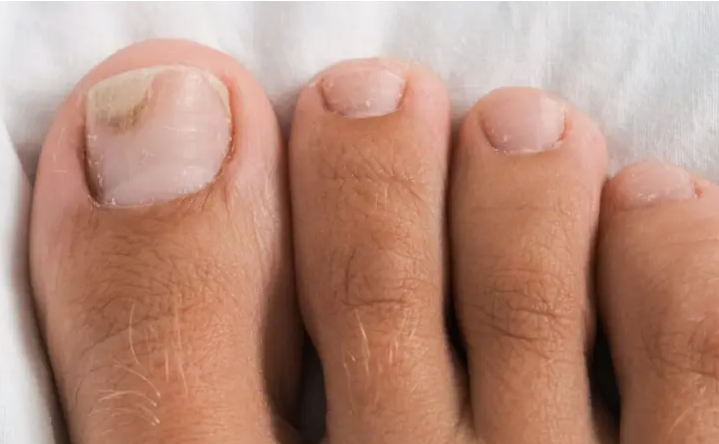How to Avoid Toenail Fungus
July 3 2024
🚫🦶 Say Goodbye to Toenail Fungus! 🦶🚫
Toenail fungus can be a real nuisance, but with the right preventative measures, you can keep your feet healthy and fungus-free. 🧼🧽👣
Check out our latest article from Dr. DeBlasi to learn expert tips on avoiding toenail fungus, from proper foot hygiene to choosing the right footwear. 👟🧦🛁
👉 Read more below!
#FootCare #HealthyFeet #ToenailFungus #Podiatry #FootHealth #PreventionIsKey #FFLC
Lori DeBlasi
Kevin Lam, DPM, FACFAS

Overview:
– What is Toenail Fungus
– Prevention Tips
– Seeking Professional Help
Dr. Lori DeBlasi is a podiatric physician and surgeon practicing in Southwest Florida. Board Certified: American Board of Foot and Ankle Surgery.
Toenail fungus, also known as onychomycosis, is a common condition that can be both unsightly and uncomfortable. It often begins as a white or yellow spot under the tip of your toenail as the fungal infection goes deeper, it can cause the nail to discolor, thicken, and crumble at the edge. To help your patients avoid this frustrating condition, here are some expert tips and recommendations on preventing toenail fungus.
Maintaining proper foot hygiene is the first line of defense against toenail fungus. Encourage your patients to wash their feet daily with soap and water, paying attention to the areas between the toes.
After washing, they should thoroughly dry their feet, especially between the toes, where moisture can accumulate and create a breeding ground for fungi. While it’s important to keep the skin on the feet moisturized to prevent dryness and cracking, patients should avoid applying moisturizer between the toes to prevent excessive moisture.
Footwear plays a crucial role in preventing toenail fungus. Advise patients to wear breathable shoes made of materials like leather or mesh, which allow better air circulation and help keep feet dry. Socks are equally important; those made of synthetic fibers designed to wick moisture away from the skin are ideal. Cotton socks tend to retain moisture, increasing the risk of fungal growth. Rotating footwear regularly can also help, as wearing the same pair of shoes every day doesn’t give them time to air out and dry.

Proper nail care is essential for preventing toenail fungus. Nails should be kept short and trimmed straight across to prevent them from becoming too long or ingrown, which can provide an entry point for fungi. Make sure patients know the importance of using clean nail clippers and files, sterilizing these tools before each use to prevent the transfer of fungi. Personal items such as nail clippers, files, and shoes should not be shared, as fungi can easily spread from one person to another.

Public places like gyms, swimming pools, and communal showers are common sources of fungal infections. To minimize the risk, patients should wear flip-flops or shower shoes in these areas to prevent direct contact with surfaces that may harbor fungi.
After using public facilities, washing and thoroughly drying feet can help remove any fungi they may have come into contact with.
Since fungi thrive in moist environments, keeping feet dry is critical. Advise patients to change socks regularly if their feet and inside of their shoes to reduce moisture and kill fungi.
A healthy immune system can help prevent infections, including toenail fungus. Encourage patients to eat a balanced diet rich in vitamins, minerals, and antioxidants, stay hydrated by drinking plenty of water, exercise regularly to boost immune function and overall health, and get adequate sleep to support a well-functioning immune system.

Nail salons can be a source of fungal infections if proper hygiene practices are not followed. Patients should choose reputable salons that follow strict sanitation protocols, bring their own tools to reduce the risk of cross-contamination, and verify that the salon uses autoclaves or other effective sterilization methods for their tools.
If a patient does develop a fungal infection, early treatment is key to preventing its spread. Encourage patients to seek professional advice from a podiatrist, who can provide appropriate treatments, including antifungal medications and topical treatments. Home remedies are often ineffective and can delay proper treatment. After treatment, regular monitoring and maintenance can prevent recurrence.
Preventing toenail fungus requires a proactive approach to foot care, hygiene, and lifestyle choices. By educating patients on these preventive measures, podiatrists can help them maintain healthy,  fungus-free feet. Regular check-ups and early intervention at the first sign of trouble can also ensure any issues are promptly addressed, keeping their feet in optimal health.
fungus-free feet. Regular check-ups and early intervention at the first sign of trouble can also ensure any issues are promptly addressed, keeping their feet in optimal health.
If you or someone you know is experiencing toenail fungus, don’t hesitate to seek professional advice from a podiatrist, contact Dr. DeBlasi’s office at (239) 430-3668 (FOOT) or visit www.NaplesPodiatrist.com to schedule an examination.

 Fax: (239) 692-9436
Fax: (239) 692-9436 Tel: 239-430-3668
Tel: 239-430-3668

